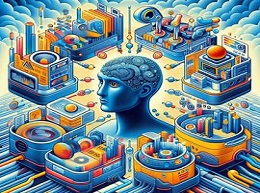Building Robust Recommender Systems: Challenges and Solutions

Recommender systems have become indispensable tools in today's digital landscape, guiding users to relevant products, content, and experiences. However, building robust systems that deliver accurate recommendations is not without its challenges. In this article, we'll explore the complexities of recommender systems and the solutions driving their reliability.
Understanding Recommender Systems
Types of Recommender Systems
- Introducing collaborative filtering, content-based filtering, and hybrid approaches to recommendation algorithms.
- Example: Netflix's recommendation engine combines collaborative filtering with content-based analysis to suggest personalized movie and TV show selections.
Challenges in Building Robust Recommenders
Cold Start Problem
- Discussing how recommender systems struggle to provide accurate recommendations for new users or items with limited data.
- Example: A new music streaming service faces challenges in suggesting songs to users who have just signed up.
Data Sparsity
- Exploring the issue of sparse user-item interaction data, which hinders the ability of recommender systems to capture user preferences accurately.
- Example: E-commerce platforms may struggle to recommend niche products with limited purchase history.
Scalability
- Addressing the scalability challenges associated with processing large volumes of data and serving recommendations to a growing user base.
- Example: An online marketplace experiences performance issues as the number of users and products increases.
Solutions for Building Robust Recommender Systems
Data Augmentation Techniques
- Exploring methods such as data imputation, synthetic data generation, and feature engineering to address data sparsity and the cold start problem.
- Example: Utilizing user demographics and contextual information to enhance recommendation accuracy.
Matrix Factorization
- Detailing matrix factorization techniques like Singular Value Decomposition (SVD) and Alternating Least Squares (ALS) to extract latent features and improve recommendation quality.
- Example: Collaborative filtering models decompose the user-item interaction matrix to uncover underlying patterns.
Deep Learning Approaches
- Discussing the use of deep neural networks for recommendation tasks, leveraging techniques like neural collaborative filtering and sequence-based models.
- Example: YouTube's recommendation system employs deep learning models to personalize video recommendations based on user viewing history and preferences.
Evaluation Metrics for Recommender Systems
- Introducing metrics such as precision, recall, and Mean Absolute Error (MAE) to assess the performance of recommendation algorithms.
- Example: A movie streaming platform measures the accuracy of its recommendations using metrics like Mean Average Precision (MAP) and Normalized Discounted Cumulative Gain (NDCG).
Despite the challenges they face, recommender systems continue to play a crucial role in enhancing user experiences and driving engagement across various domains. By understanding the complexities involved and implementing innovative solutions, developers can build robust recommendation engines that effectively meet the needs and preferences of users, ultimately driving business success.














